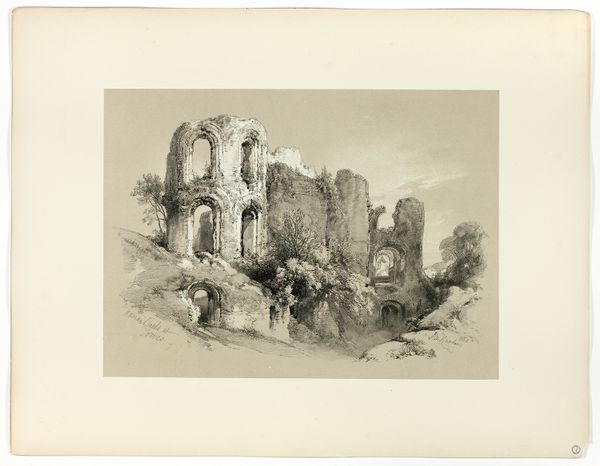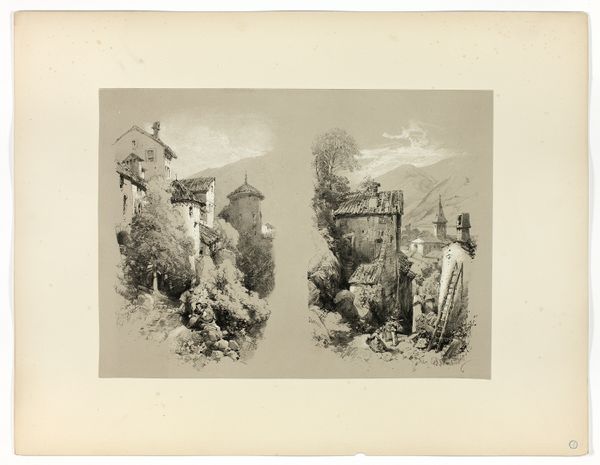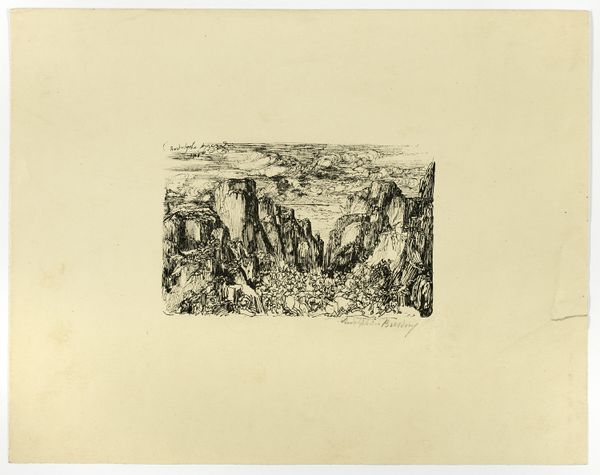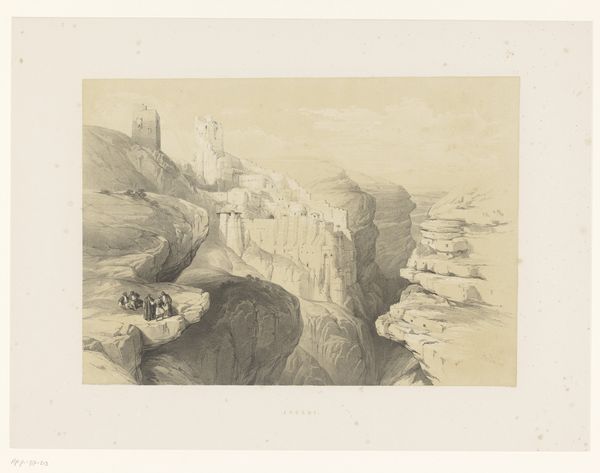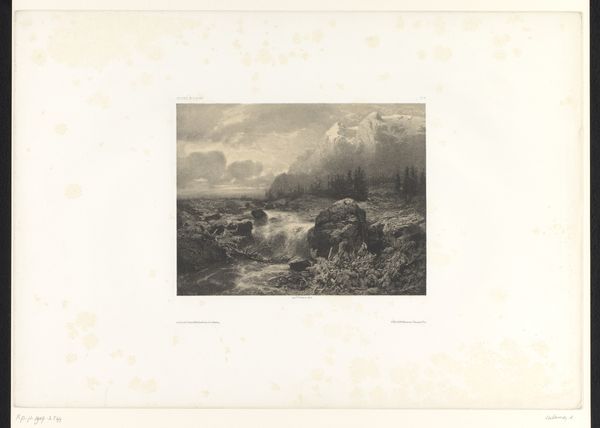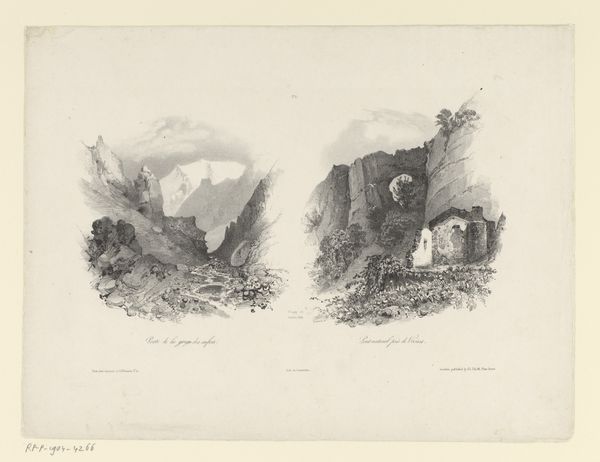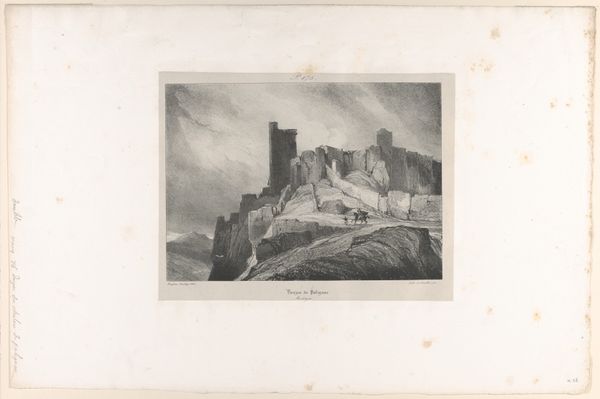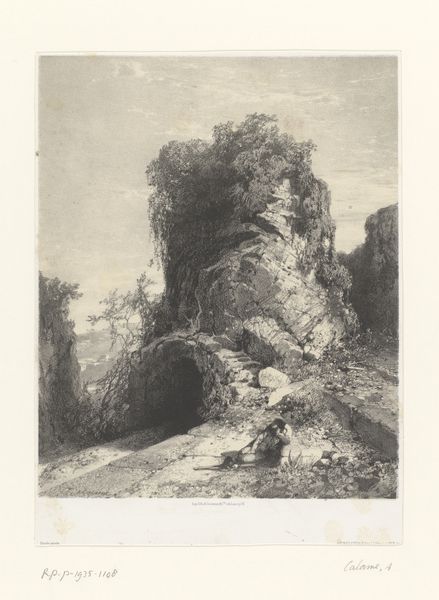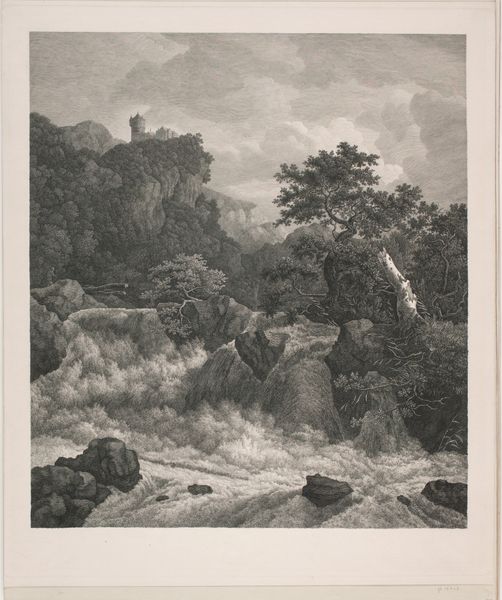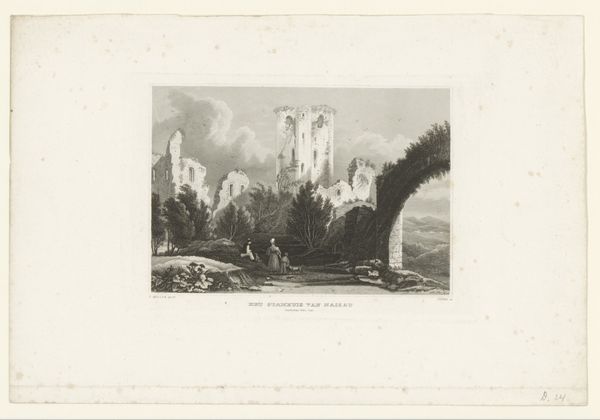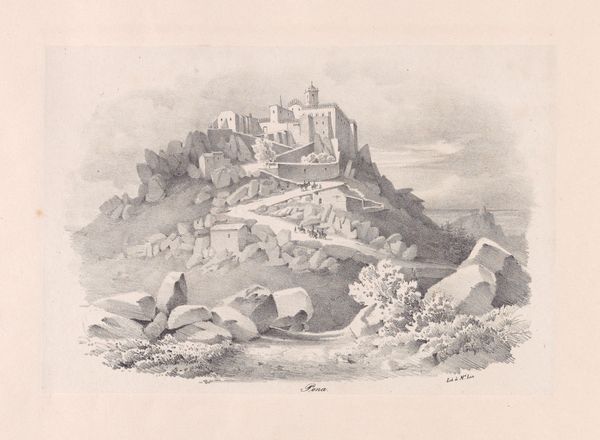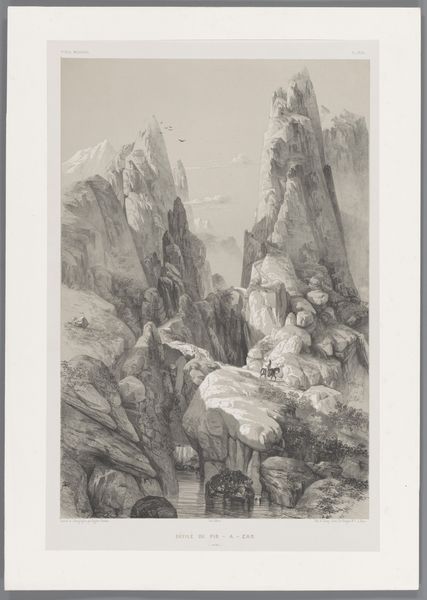
Beilstein on the Moselle, from Picturesque Selections 1860
0:00
0:00
Dimensions: 278 × 385 mm (image, primary support); 430 × 560 mm (secondary support)
Copyright: Public Domain
James Duffield Harding created this lithograph titled, Beilstein on the Moselle, from Picturesque Selections. What strikes me first is the compositional strategy at play. The arrangement pivots on contrasts between light and dark. Look at how Harding uses a limited palette of greys to define forms, creating depth and texture. Notice how the structural elements in the landscape are rendered with cross-hatching, a technique that not only defines the form but also adds to the sense of movement and vitality. The buildings and ruins depicted are not just objects; they are nodes within a network of lines, shading, and spatial relationships. Consider the implications of this method. Harding is inviting us to consider how we perceive space and form. The picturesque, after all, is about framing and staging nature. The interplay of structure and landscape reflects a broader cultural discourse about how we organize and interpret the world around us.
Comments
No comments
Be the first to comment and join the conversation on the ultimate creative platform.
